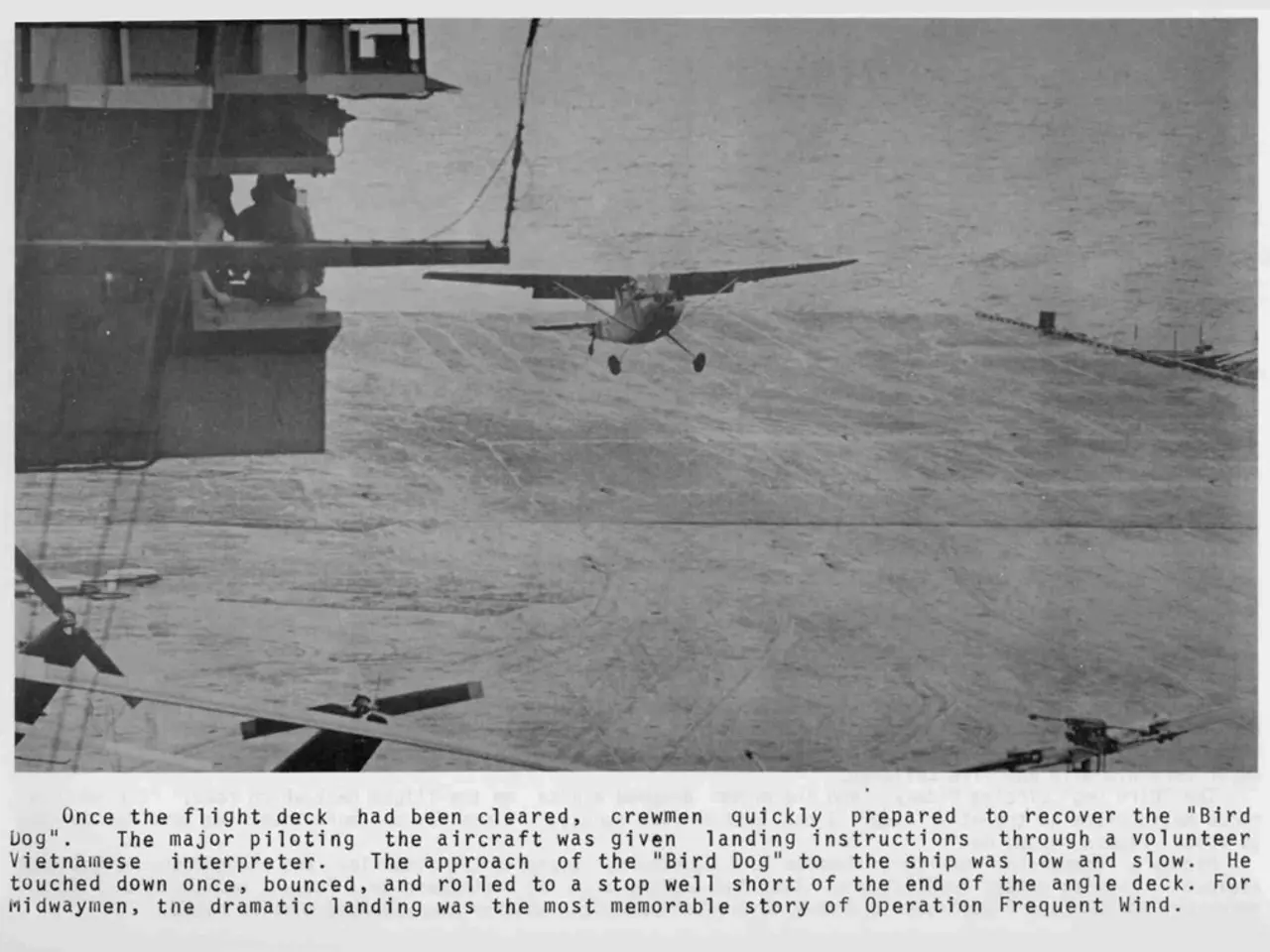Air Lift in Gaza Rather Than Wunstorf: The German Air Force at Work
In the past 22 months, the health authority controlled by Hamas has reported that more than 61,000 Palestinians have tragically lost their lives, with over 150,600 others injured. Most of the victims are said to be women, minors, and the elderly [1]. The ongoing conflict in Gaza has led to a critical humanitarian situation, with starvation and malnutrition at their highest since the conflict began.
Aid organizations are working tirelessly to alleviate the crisis, but efforts are hampered by numerous challenges. Aid deliveries to the Gaza Strip face severe logistical hurdles, dangerous conditions, and rampant looting, which significantly compromise their effectiveness [1][3][4][5].
Despite these difficulties, some aid is making its way into the region. For instance, the UN World Food Programme (WFP) continues to deliver over 10,400 metric tons of food via more than 800 trucks since early August [4]. However, operational conditions are deteriorating, with only a slight improvement in truck entries since late July.
Aid deliveries via air drops have also occurred. Since Friday, the German military has been conducting these drops with their transport aircraft from Lower Saxony, Wunstorf. Each aircraft drops 11 to 12 tons of goods per flight, including food items like rice, flour, sugar, pasta, and canned goods [2].
However, the overall effectiveness of these aid drops is questionable. Aid organizations view air drops skeptically but acknowledge it's better than nothing. Martin Frick, representative of the World Food Programme, describes air drops as "expensive, risky, and barely controllable" [6]. Moreover, no specific information is available on how much of the aid from the aircraft ends up with the intended recipients.
The controversial Gaza Humanitarian Foundation (GHF), supported by Israel and the US, has been distributing aid in the Gaza Strip alongside international aid organizations since late May [7]. However, there have been fatal incidents around the four GHF centers in the Gaza Strip. The German military mission to drop aid in the Gaza Strip is considered quite safe by pilot Dieter, but there is still a residual risk [2].
Israel has imposed a near-total blockade on aid deliveries to the Gaza Strip in March, aiming to increase pressure on the Islamic Hamas to release the remaining 50 hostages. Since May, smaller amounts of aid have been allowed again [8]. Israel has also introduced a new procedure for the phased and controlled resumption of imports through the private sector, with selected Palestinian traders participating [8].
The UN warns of an impending famine in the Gaza Strip, with over 170,000 tons of food from the World Food Programme currently in the region or en route [1]. The olive-green parachutes used in the drops are old personal parachutes, described as "do-it-yourself" style [2].
Despite these efforts, the humanitarian situation remains critical. Over a third of Gaza’s population goes without food for days, and hundreds of thousands of children face severe malnutrition. Around half a million people are on the brink of famine, with hunger widespread [4]. The aim of the new procedure is to increase the amount of aid goods for the population in the Gaza Strip while reducing dependence on the UN and other international organizations [9].
References: 1. Al Jazeera 2. Deutsche Welle 3. The New York Times 4. UN World Food Programme 5. Reuters 6. CNN 7. The Guardian 8. BBC News 9. Haaretz
- In the midst of the dire humanitarian crisis in Gaza, the UN World Food Programme (WFP) is working to deliver food aid, having sent over 10,400 metric tons of food via 800 trucks since early August [4].
- The ongoing conflict in Gaza has resulted in a sharp increase in food-and-drink-related concerns, with aids organizations struggling to keep up with the demand as malnutrition and starvation plague the region [1].
- Amidst the polarizing political climate and war-and-conflicts in Gaza, the general-news landscape is frequently filled with discussions about the distribution and effectiveness of food aid, provided by both international organizations and local foundations like the Gaza Humanitarian Foundation (GHF) [7].






